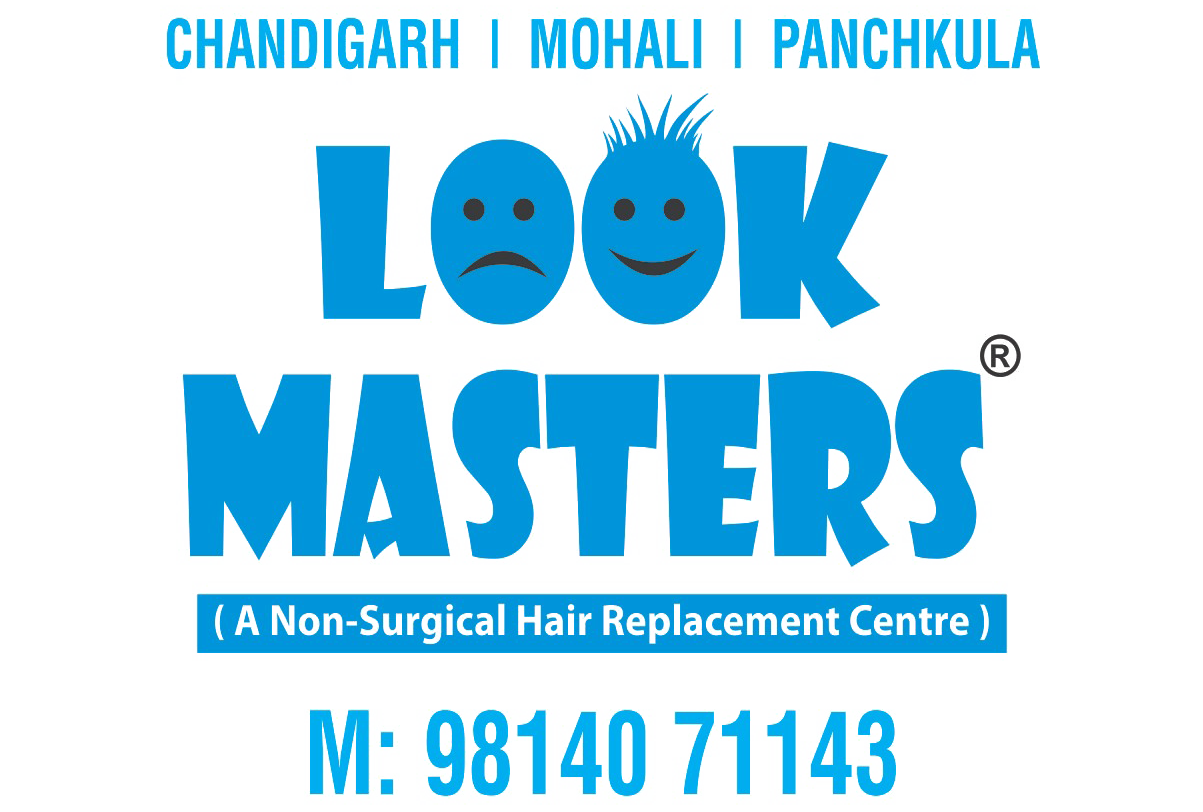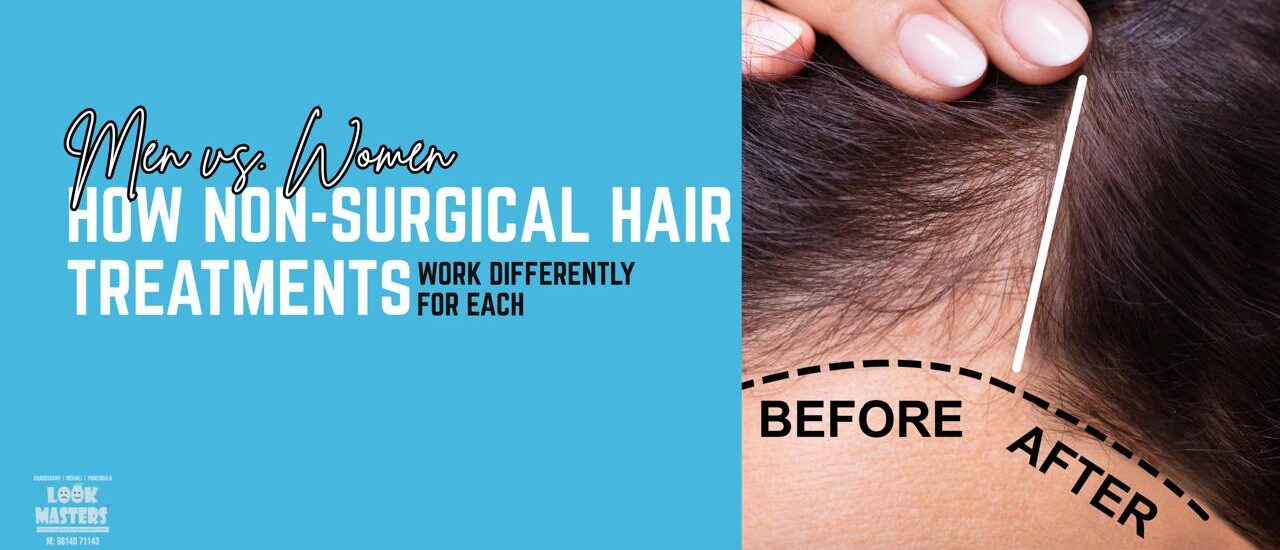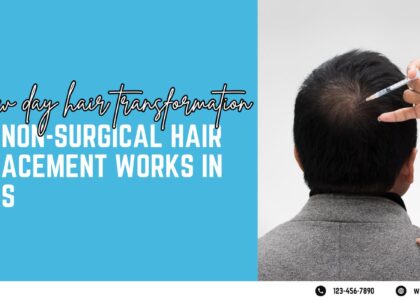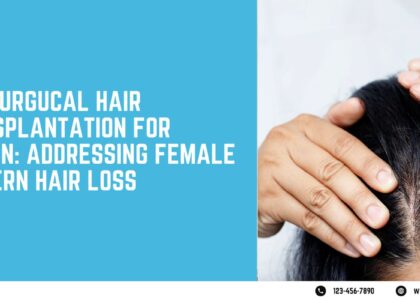Hair loss is one of those things that affects people in remarkably different ways. In men, it typically begins with a receding hairline or a bald area directly on the crown. In women, it tends to feel like the hair is just not as dense anymore, the part line appears wider, or occasionally the ponytail feels too sparse. The distinction is little, but it’s a big deal when you consider what kind of treatment is required.
Non-surgical hair remedies are extremely popular because there’s no surgery involved, no scars, no downtime, and they can be styled to be very natural-looking. But how men’s and women’s solutions are applied to them isn’t the same. Everyone requires a solution that accommodates how they lose their hair, how it makes them feel, and what they expect to happen when they catch a glimpse of themselves in the mirror.
Why Men and Women Lose Hair Differently
Men primarily experience hair loss due to hormones and heredity. You may have noticed the same trend in your father, uncle, or brother. It begins with a receding hairline, followed by baldness on the top, and gradually joins together. In women, hair loss is not like patches but more like thinning all over the scalp. There may be numerous reasons—stress, pregnancy, menopause, health issues like thyroid, PCOS, or even due to hairstyles that tug the hair back tightly. As the pattern itself is unique, the method of correcting it also needs to be unique. Men require something that gives the hairline and the crown a fuller appearance. Women are mostly concerned with equal thickness and gentle coverage so the scalp cannot be seen.
PRP Therapy And How It Assists Both
One of the very popular non-surgical treatments is PRP, which stands for Platelet Rich Plasma. In plain terms, it utilizes your own blood, the nutrient-rich part is isolated, and then it is returned to the scalp to nourish the weak hair follicles. For men, doctors tend to concentrate on the crown and the front, since those are the areas that get depleted first. For women, it is distributed throughout the entire head since thinning is not a single area. PRP is slow; you don’t have results overnight, but it can make the hair stronger and thicker. Women feel more change sometimes because the hair as a whole feels fuller and is easier to style. Men will notice the front section more; if it stops looking so bare, they feel it is effective.
Hair Patches, Wigs, and Systems
Systems of non-surgical hair replacement are also extremely popular these days. These are not similar to old-fashioned wigs, but sophisticated hair patches or complete systems that are fitted precisely to your own hair. For men, the key is the front hairline and the temples. If those look natural, then the rest of the thing looks natural. The patch is trimmed and styled so that it blends with the sides. For females, it is more about covering the top or part area, rather than the hairline.
Females tend to have toppers that are combined with their own hair, having the proper highlights and luster, so no one will ever know. Men tend to prefer short style cuts, while women prefer something that maintains their length and layers. The system is designed in a manner that allows both are free to style it and feel at ease.
Scalp Micropigmentation (SMP)
SMP is another technique, where very fine dots are created on the scalp to resemble natural roots of hair. For men, it is effective when they desire a shaved or buzz cut appearance. It also serves to fill the crown area so it is not vacant under sunlight. The hairline is formed to appear natural with fine details. The same method is applied to women, but more gently. The parting line and the scalp that appears through thinning hair are colored, which densifies the hair. Women would want it to appear subtle and not harsh, so the dots are further apart and lighter. This is a fast technique, with minimal downtime, and provides a good change in the appearance of the hair.
Laser Therapy And Easy Care
Low-level laser therapy is another choice. It employs mild light to enhance the condition of the scalp and promote hair growth. It is painless and can be carried out at home or in clinics using devices such as caps. Men tend to include this in their weekly routine, particularly if they have an oily scalp or use helmets frequently. Women can use it as well, particularly at times of stress or post-pregnancy, when hair is extremely thin.
But laser therapy is not magic; it’s slow-acting and works after several months, and it works best when applied regularly. Along with this, simple hair care is also very important. Men should clean their scalp well and avoid using very hot water. Women should not wear very tight hairstyles or too much heat from appliances. Healthy food with sufficient protein and iron is beneficial for both.
What Results Imply For Men Compared To Women
Results are perceived differently as well. Men generally glance straight into the mirror to see if their hairline appears to be solid or if the crown is better covered. If those two aspects appear natural, then they are content. Women can see improvements in daily life. If their ponytail appears thicker, if they don’t get to see scalp when parting the hair, or if a blow dry provides body without excessive effort, then they are pleased. The emotional effect is also varied. Men want confidence in style. Women want to feel feminine and not be concerned about others noticing they are losing hair.
How To Take Care And What To Expect?
Non-surgical procedures require frequent maintenance. PRP treatments are typically done every few weeks initially and then gradually less often. Hair systems or patches must be taken off, washed, and reattached at regular intervals. SMP lasts a long time and might require a retouch after a couple of years or a year. Laser therapy requires regular weekly sessions. In men, all visits are generally about examining the hairline or patching up. In women, it might be topper blending with natural hair or shades and highlight adjusting. These are not that difficult to upkeep, but regular maintenance works the best.
Questions To Ask Before You Begin
Men should question:
- Will it look natural when somebody is near?
- How long will the patch or system last?
- Can I cut it short?
- How often must I return?
Women should inquire:
- Can I still color and style my hair?
- Will it be light and comfortable enough to wear every day?
- Can I put it up and not have it show?
- What is the maintenance involved?
Both of them ought to inquire about costs in the long term, how long each session lasts, and what to do in case they travel frequently.
Choose Wisely
Non-surgical hair restorations have provided both women and men with numerous options that did not exist. Men can regain a natural appearing hairline and crown without resorting to surgery. Women can regain fuller hair that appears soft and is perfectly blended.
The trick is to decide on the treatment best suited to your hair loss type and lifestyle. We are all individuals, and therefore, the strategy must be individual as well. It’s not about the hair, it’s about you, how you feel within. When your hair is good, you are more confident, you dress better, you smile more, and you cease to care about what people see.
Ultimately, hair is not just about appearance, but about comfort and confidence in oneself as well. With the right non-surgical treatment, both men and women can feel themselves again, with no fear of bald patches or thinning hair causing them discomfort. It is not always about looking younger, but simply feeling like the person you know you are. And that is why these treatments are so unique.
FAQS
- What are non-surgical hair treatments?
Non-surgical hair treatments are methods to promote hair growth or prevent loss of hair without undergoing surgery. These include medicines, hair growth serums, PRP treatment, or laser therapy. - Do men and women get the same results?
Not necessarily. Men and women shed hair differently. Men tend to lose hair at the top or front of the head, whereas women tend to lose hair evenly everywhere. For this reason, treatments may function differently for each. - Are there treatments that are more suitable for men than women?
Yes. Some treatments and medications are more effective for men. Women might respond better to subtle serums, lasers, or treatments that address general thinning. - When can I expect to see results?
Hair grows slowly, so it generally takes several months before you see a difference. The outcome may vary from person to person based on age, hair, and the treatment method.












